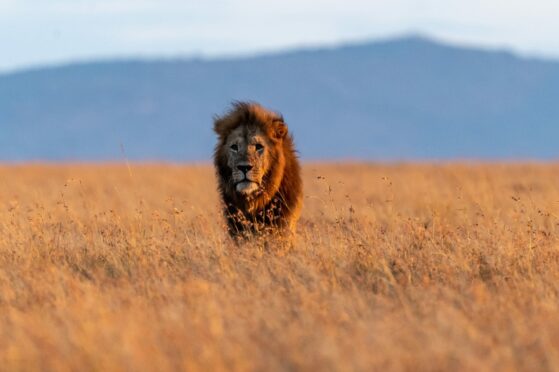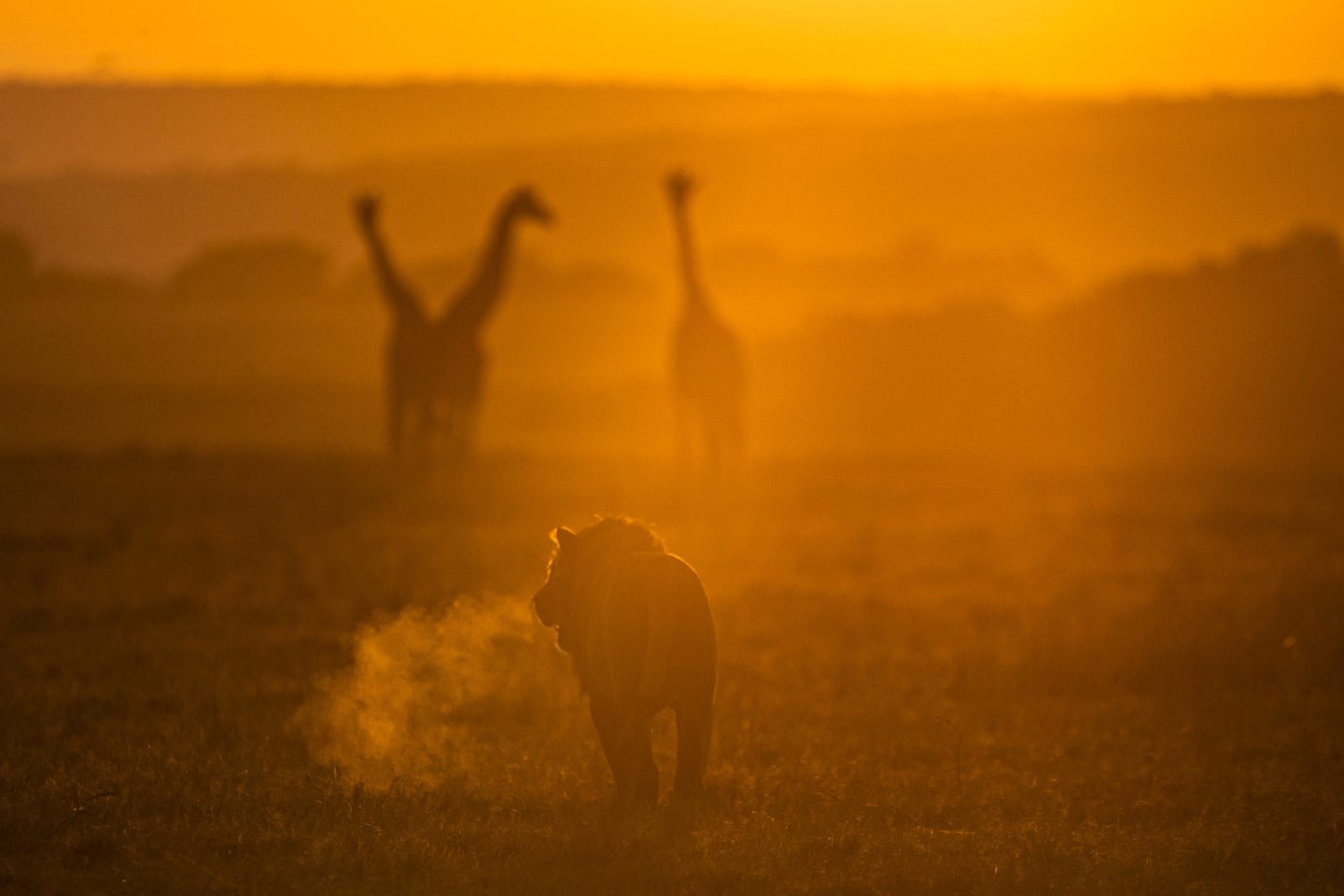
Lying belly down on the grass, I slowly creep forwards on my elbows. The sun has disappeared, wiped out by the thick, suffocating cloak of night.
All that remains of day is a tangerine glow streaking the horizon, illuminating a bull giraffe below a boscia tree.
Beautiful to behold, the scene is a struggle to capture on camera, as I race against the rapidly fading light. But it’s moments like these that have the power to create pictures worth more than a thousand words.
Twelve years ago, when I first went on safari, I haphazardly hit the shutter button on my camera, snapping at stationary hippos and reframing photos of sleeping lions every time they twitched a whisker. Overwhelmed by a new, fresh environment, I didn’t want to miss a minute. Today, most of those files are gathering digital dust on untouched hard drives but the images I cherish are the ones with a story to tell.
Photographer and guide Paul Goldstein has spent years studying Africa’s wildlife. But several standout pictures have defined his career.
“It was early October, and we’d been following a cheetah and her cubs for four days,” he says, as we drive across Kenya’s Naboisho conservancy.
“The cubs were playing on a stump, but 400 metres ahead I saw a single acacia tree, so I positioned the vehicle and told my guests to stay with me on this one. I knew those cubs wouldn’t be able to walk past without treating it like a leisure centre. But I didn’t expect the mum to go up it as well.”
The picture of seven tree-climbing cheetahs was highly commended at the Wildlife Photographer Of The Year competition in 2011. That same year, an image Paul took of flamingos taking flight at dawn over Lake Nakuru was also exhibited at London’s Natural History Museum.
“I needed the rain – but I wanted it clear by sunrise. I was awake all night checking the weather,” he recalls.
“Finally the downpour stopped, generating a thick later of mist. I drove to the far side of the lake and gambled on hyenas chasing the flamingos and sending them into the air.”
More than a decade later, Paul is on a mission to take people back to the roots of crafting a decent photograph. His training ground is Kenya’s Maasai Mara, where he co-owns three Kicheche camps in the conservancies, tracts of community-owned land bordering the national reserve.
Dividing my time between camps in Naboisho and Mara North, I’m hoping to achieve a digital reset.
Of all the safari destinations in Africa, the Mara ranks highly. The concentration of wildlife is unbeatable. Naboishoor has the highest density of lions in East Africa.
We watch cubs clambering over fallen branches, mothers carrying newborns by the scruff of their necks, and males parading golden crowns in the syrupy morning light.
One remarkable sight involves seven juveniles drinking from a hippo pool, sipping with their eyes set firmly on the heavyweight honkers who could snap their jaws at any time.
Every day, there are several plotlines to follow. Moving between each scene as it unravels, Paul is in constant conversation with his guides. Rather than driving around aimlessly, hoping to strike it lucky, movements are carefully considered.
But along with finding the action, light and background are key to crafting a beautiful photo – and the Mara delivers on all fronts.
Heading out shortly after 5.30am, desperate to fill our canvas with a subject, we search for an animal. We settle for a herd of wildebeest, shooting into the sun and slowing down the shutter speed on our cameras until the animals float like ghosts through our frames.
Paul always challenges himself to be original, trying something different each time.
“It’s about seeing new light through old windows,” he insists.
In Mara North, a scenic conservancy of granite-strewn valleys curved by the Mara river, we track two cheetah brothers until they collapse under the shade of a gardenia tree. Ordinarily, this would be a good time to leave; cats sleep between 12 and 20 hours per day. But cheetahs are diurnal hunters and these two are in need of a meal.
“The moment those clouds come in and the temperature cools, they’ll move,” Paul says. As if on cue, when the sky turns grey and fat raindrops begin to fall, the cheetahs snap into action. Eyes fixed on a herd of wildebeest, they slink through the wispy oat grass. Now the real fieldwork comes into play: figuring out which way they’ll run.
We head across the valley, anticipating where the brothers might end up. Paul’s hunch is correct.
Like a bowling ball striking through skittles, the lithe predators scatter their confused prey, singling out a weaker adolescent.
Paul has also clocked the unfortunate victim, so he knows exactly where to focus his lens when the cheetahs pounce.
A week spent in the Mara might not have transformed me into super sharp shooter but looking through a lens has refreshed my world view. For me, photography is a form of meditation; it allows me to focus and concentrate on one thing.
And sometimes the greatest pleasure lies in not taking pictures at all.
Experience – I’ve learned over the years – is just as much about knowing when to put the camera down as it is about knowing when to pick the camera up.
P.S.
The best time to visit Kenya on safari is between the end of June and September. You’ll want to guarantee seeing all your favourite animals and this is when they migrate. There’s less foilage and bush at this time of year so animals will head to watering holes.
Factfile:
Abercrombie & Kent (abercrombiekent.co.uk; 01242 547 760) offers a six-night trip, three nights at each camp – Kicheche Valley and Kicheche Mara North – from £4,999pp.

Enjoy the convenience of having The Sunday Post delivered as a digital ePaper straight to your smartphone, tablet or computer.
Subscribe for only £5.49 a month and enjoy all the benefits of the printed paper as a digital replica.
Subscribe © Press Association Images
© Press Association Images